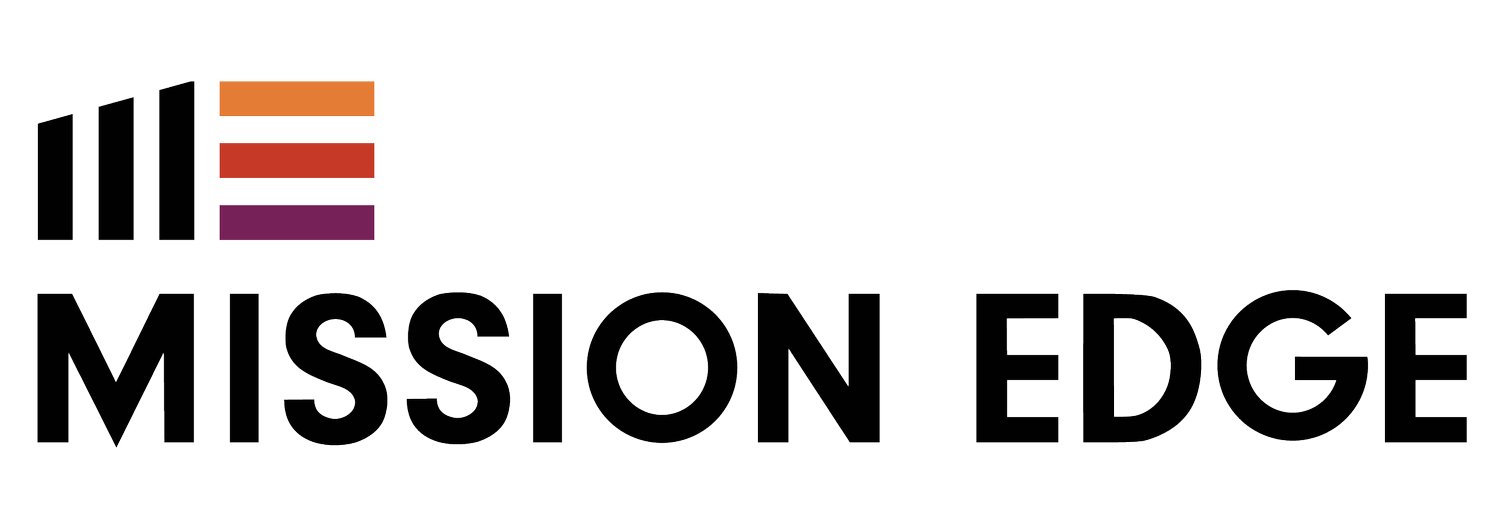Working Smarter, Not Harder
Common business mistakes that stall growth and how to avoid them
Have you ever wondered if there’s a “secret sauce” to small business?
It seems like there are some ideas that are destined to succeed, while others crumble somewhere along the way.
Sadly, the “secret sauce” idea comes from a deeply-ingrained belief that we need to be independent to succeed in business. For many of us, we’ve been conditioned to believe that one mistake equals total failure, and that it’s better to suffer in silence than to let on that we might not have it all together.
While it’s true that there’s no one-size-fits-all handbook for small business, there’s still plenty to learn from others who are in your shoes. Whether you’re just starting out or you've been in business for years, when we transparently share our mistakes with one another, we create an opportunity to learn how to avoid certain mistakes — or problem-solve our way out of them.
Most mistakes in small business fall into one of the following categories:
Financial management and planning
Legal and risk management
Operations and strategy
Marketing and customer relations
Employee and personal relations
We believe in working smarter, not harder. That’s why we’re breaking down some of the most common small business pitfalls and how to avoid them.
1 — Financial management and planning
The mistake: Not paying yourself or saving for the future of your business.
Why it’s harmful: If you’re not able to make a sustainable living while running your business, it becomes more likely that you’ll burn out. And if you don’t save with future goals in mind, you run the risk of plateauing.
How to avoid it: Cut down on expenses in other areas of your business — paying yourself fairly and saving for the future should be priorities. Start with small, achievable increments, then work your way up.
The mistake: Using personal credit for your business.
Why it’s harmful: Just because you can doesn’t mean you should — you could run into legal issues down the road, and you could miss out on business rewards.
How to avoid it: Open a line of credit just for your business to keep a firm separation between personal and professional expenses.
The mistake: Tax confusion
Why it’s harmful: Taxes can be one of the most intimidating and complicated parts of small business. There’s plenty of room for error — overreporting or underreporting income, lack of separation between personal and business expenses, etc.
How to avoid it: A small business accountant can be a great resource for all things tax-related, but there are also plenty of resources out there (i.e. Quickbooks) to help you stay on-track.
The mistake: Spending too much on business needs
Why it’s harmful: You might be overspending on the small things, like monthly subscriptions, supplies and technology. But the small things can add up quickly.
How to avoid it: By keeping track of your monthly expenses and using your resources wisely, you can avoid overspending.
The mistake: Hasty fundraising
Why it’s harmful: Since raising the capital to start your business is notoriously one of the toughest parts, many small business owners rush into fundraising without a solid plan for the funds they actually need to run their new business.
How to avoid it: Before you even put together the first powerpoint pitching your business plan, make sure you have clarity around how much capital you’ll need and where that capital will go.
2 — Legal and risk management
The mistake: Not using professional financial and legal services
Why it’s harmful: You may be able to handle the books when it’s just you, but managing payroll and tax returns can quickly consume more time and energy than you have to offer.
How to avoid it: Whether you elect to use accounting software or hire a CPA, the benefits of professional accounting services are far outweighed by the potential costs of improper bookkeeping practices.
The mistake: Poor inventory and risk management
Why it’s harmful: When you aren’t able to accurately predict how much inventory you’ll need, storage costs begin to add up, along with missed sales and uncertain cash flow.
How to avoid it: Stay up-to-date on best inventory management practices for your industry.
The mistake: Not selecting the appropriate business structure
Why it’s harmful: Not all small businesses have the same structural needs — you might be paying more taxes than you need to, which hurts your bottom line.
How to avoid it: Do your research and meet with a finance professional (like a small business CPA) to determine the best structure for you.
The mistake: Not protecting intellectual property
Why it’s harmful: There’s a myth that intellectual properties (IP) are only beneficial for large corporations — as a result, small business owners miss out on a potential growth opportunity by not applying.
How to avoid it: Take the time to set up core IP protections, and seek professional help if you need it. Your IP is your competitive edge, and this can be the difference between success and failure for your whole business.
3 — Operation and strategy
The mistake: Failing to plan and set goals
Why it’s harmful: When everything is important, nothing is important, and your productivity and growth are likely to falter or stall before your small business reaches its full potential.
How to avoid it: Set specific key performance indicators (KPIs) and communicate them with everyone on your team. Use SMART goals — Specific, Measurable, Achievable, Relevant and Trackable.
The mistake: Trying to do everything yourself
Why it’s harmful: Lots of small businesses start out as one “solopreneur.” But there’s a critical growth point where if you don’t start to delegate, you run a high risk of burnout.
How to avoid it: You don’t have to hire a full staff if you’re not financially ready to. Find other ways to get things off your plate — build relationships with independent contractors and other third-parties to help you continue to grow.
The mistake: Failing to embrace new technology
Why it’s harmful: By failing to adapt, small businesses quickly fall behind competitors, making it harder and more expensive to keep up.
How to avoid it: You don’t need to change everything at once. Take on what you can afford, and save up for future technology improvements.
The mistake: Overdependence on a single supplier
Why it’s harmful: When you’re too dependent on one supplier, you risk letting them set the pace of your growth rather than support it.
How to avoid it: Where possible, work with multiple suppliers so that you have as much control as possible over your supply chain.
4 — Marketing and customer relations
The mistake: Ignoring market research
Why it’s harmful: When you don’t conduct or investigate market research, you risk not understanding the current market environment, and possibly selling to the wrong people or with the wrong message.
How to avoid it: The Internet is full of free and readily available information that can be extraordinarily useful to you and your business.
The mistake: Lack of differentiation
Why it’s harmful: When you don’t differentiate your product from the competition, you miss out on potential customers, sales and revenue.
How to avoid it: Find what makes your product different and/or needed for your specific audience, then hone in on that in marketing and messaging across all of your platforms.
The mistake: Lack of customer retention strategies
Why it’s harmful: If you focus purely on gaining new customers, you miss out on repeat sales and customer loyalty.
How to avoid it: Create a sense of community through newsletters or blogs, a personalized customer service experience and avenues for customers to provide feedback.
The mistake: Undervaluing your offerings
Why it’s harmful: Simply put, you could be missing out on revenue.
How to avoid it: If your prices haven’t changed in years, or if you’re still not taking home a paycheck, it’s probably time to consider charging more.
5 — Employee and personal relations
The mistake: Not prioritizing employee welfare
Why it’s harmful: Your employees are your most valuable asset. If you’re not communicating that value to them, you’re less likely to retain them.
How to avoid it: Even if you can’t offer a company car and free breakfast, lunch and dinner, you can still support them by encouraging work-life balance, creating healthy workplace communication and, perhaps most importantly, fair compensation.
The mistake: Lack of work-life balance
Why it’s harmful: It’s great to be passionate about your business. But if that passion becomes all-consuming to the point that your relationships and other commitments are suffering, it’s time to take a step back and re-evaluate.
How to avoid it: Create boundaries that work for you — maybe you don’t check emails after 8 pm, or you don’t clock in at all on Sundays. Find ways to take care of your mental, physical and emotional wellbeing so that you can show up as a better business owner and member of your community.
The mistake: Stop learning and growing
Why it’s harmful: When you stop focusing on professional development altogether, you miss out on your full potential as a leader.
How to avoid it: You don’t necessarily need to go back to school or get your MBA in order to grow as a leader. Start by taking advantage of free resources, both online and in your community.
The strongest leaders know when to ask for help
Maybe you’ve already fallen into one or more of these pitfalls.
When you start out in a small business, you don’t always have the luxury of perspective, or the resources to know what to avoid before it’s “too late.”
That’s why Mission Edge is here.
We know there’s a gap between those who have resources and those who don’t, but we also know that’s not the only indicator of success in small business.
We created the Impact Lab as a free program to help small business owners like you figure out what’s holding them back, and help them work toward their goals with solid, data-driven planning and personalized, community-based support.
work smarter, not harder
Are you ready to take advantage of this free resource and take control of the success of your business?
(The only way to be invited to apply!)
Want to keep the inspiration going? Read more success stories.
See how Impact Lab could help you gain financial clarity for your business in 2024
Join the waitlist to apply for the next cohort!
















